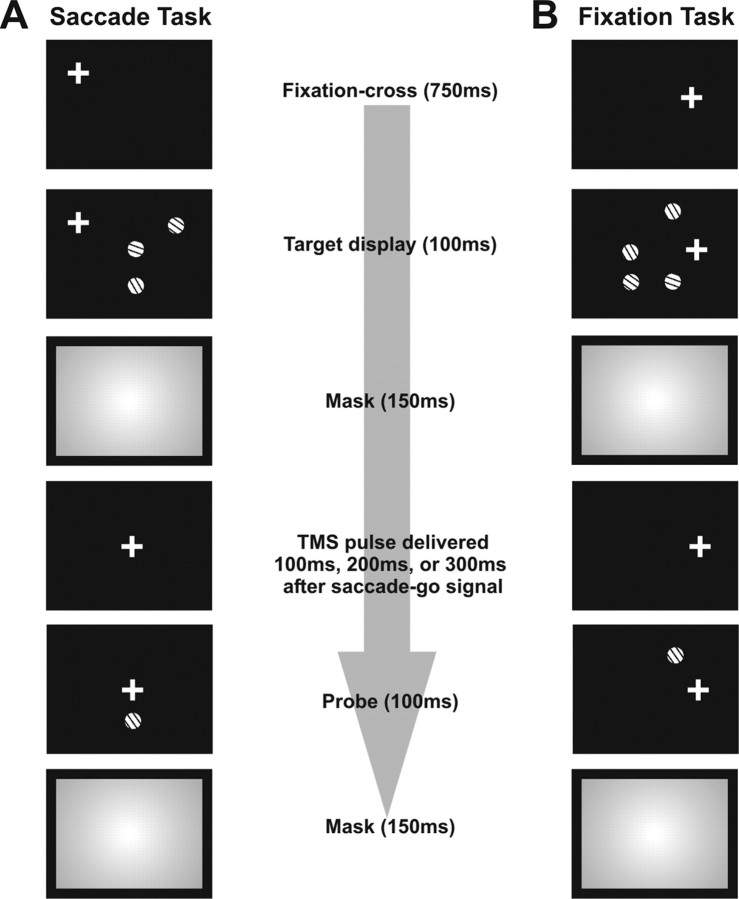Figure 2.
General experimental paradigm for our study. The rectangles of each panel show the temporal order during a typical trial for presentation of fixation crosses and the visual stimuli. A, The saccade task. Subjects fixated on the fixation cross while the target display was briefly presented (100 ms) containing either a lone target or a target accompanied by a random number of distracters (i.e., total set size of target + distracters was 1–6 or 8). After the mask (150 ms), subjects moved their eyes to the new location of fixation cross. In TMS trials, TMS pulses were time locked to the onset of the second fixation cross. Pulses were delivered either 100, 200, or 300 ms after the second fixation cross was presented. After the saccade, a probe was presented (100 ms) at the same location as the target. Subjects were required to indicate how the probe's orientation differed relative to the target's orientation. B, The fixation task is the same as the saccade task except that subjects were required to maintain eye fixation through target display and probe presentations. The fixation cross remained fixed in the same position throughout the trial. Again, TMS pulses were delivered at one of the three time intervals relative to the onset of the second fixation cross in TMS trials.

